Ship Life Aboard the…
Africa Mercy
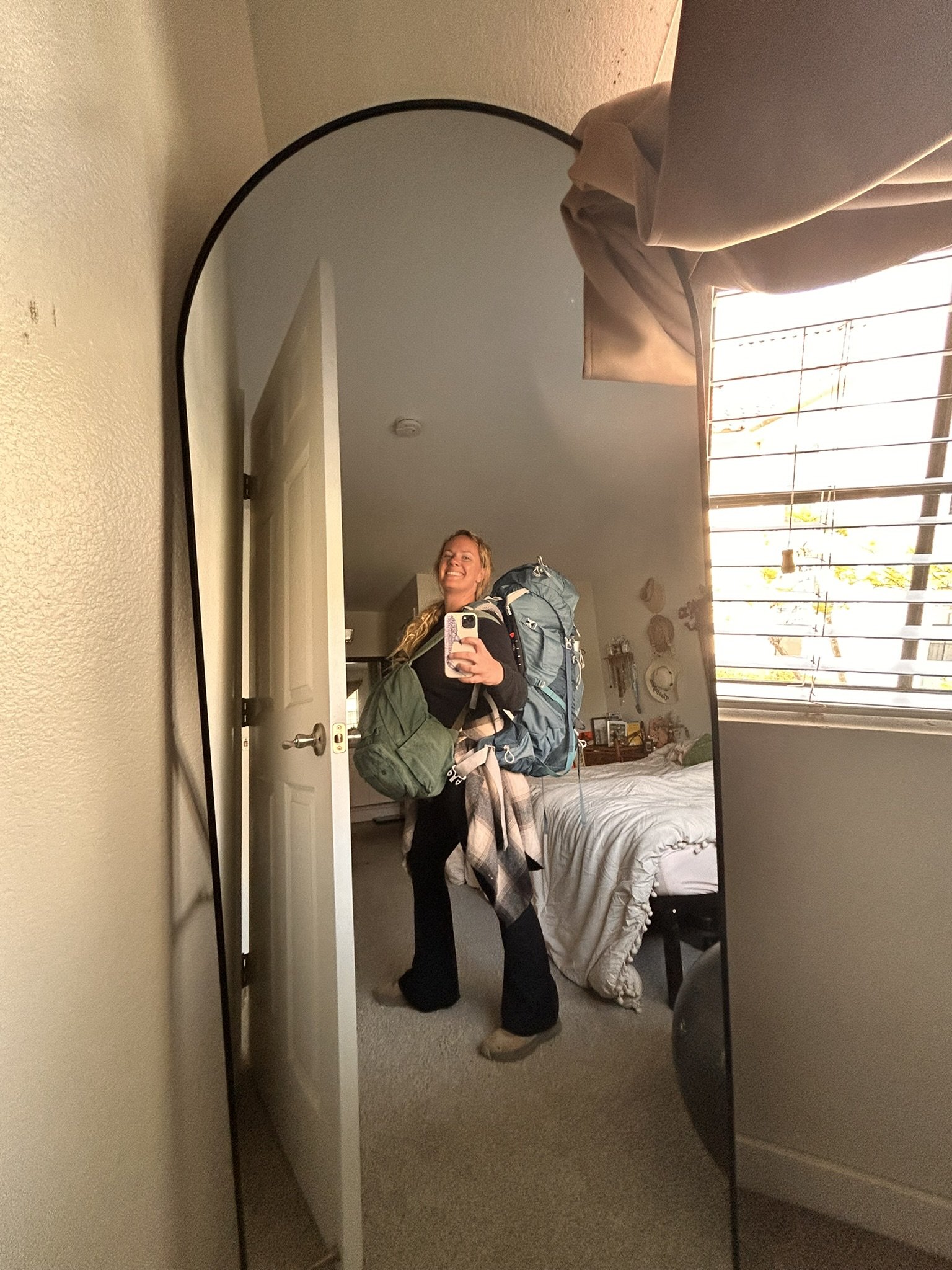
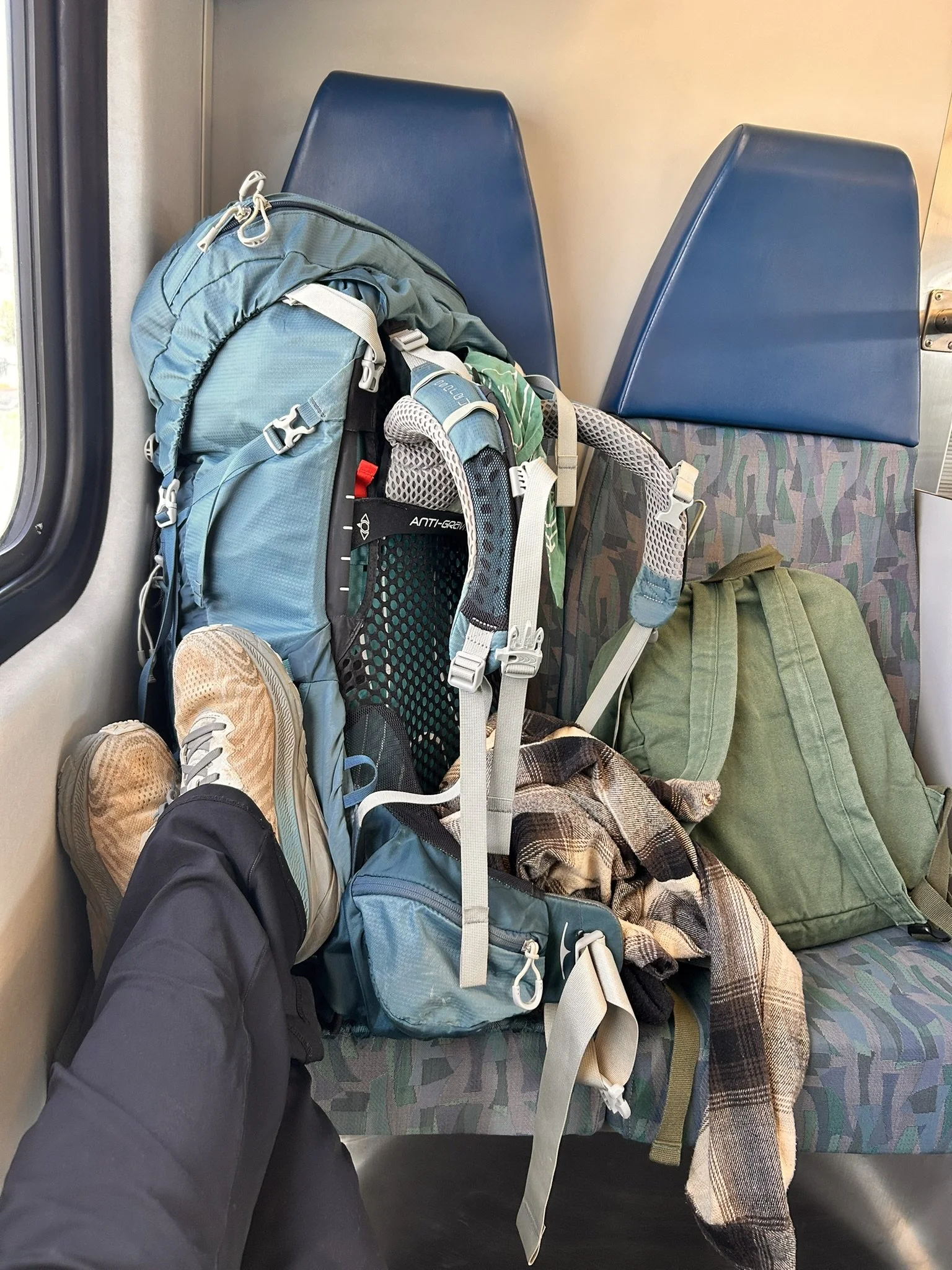

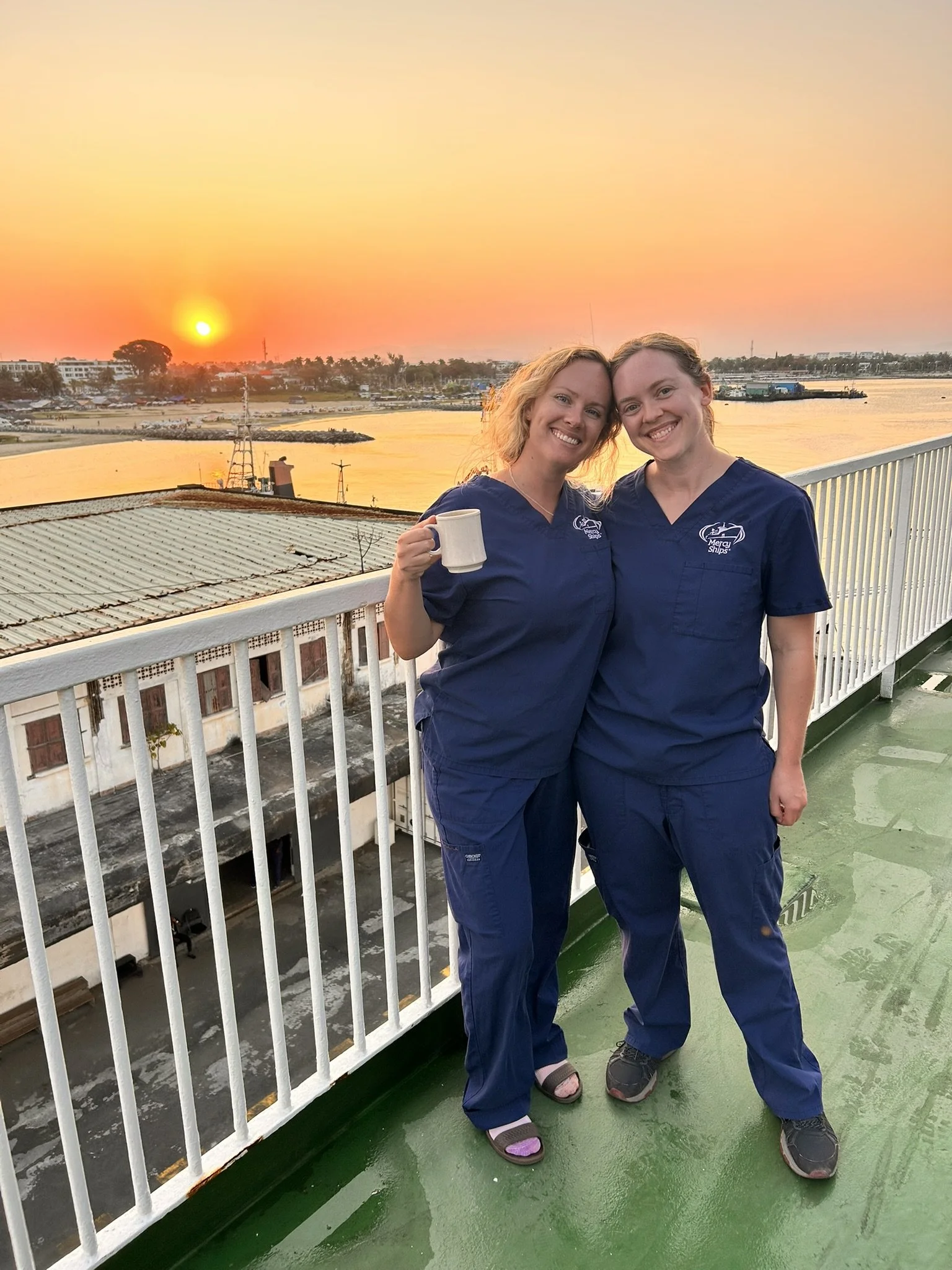
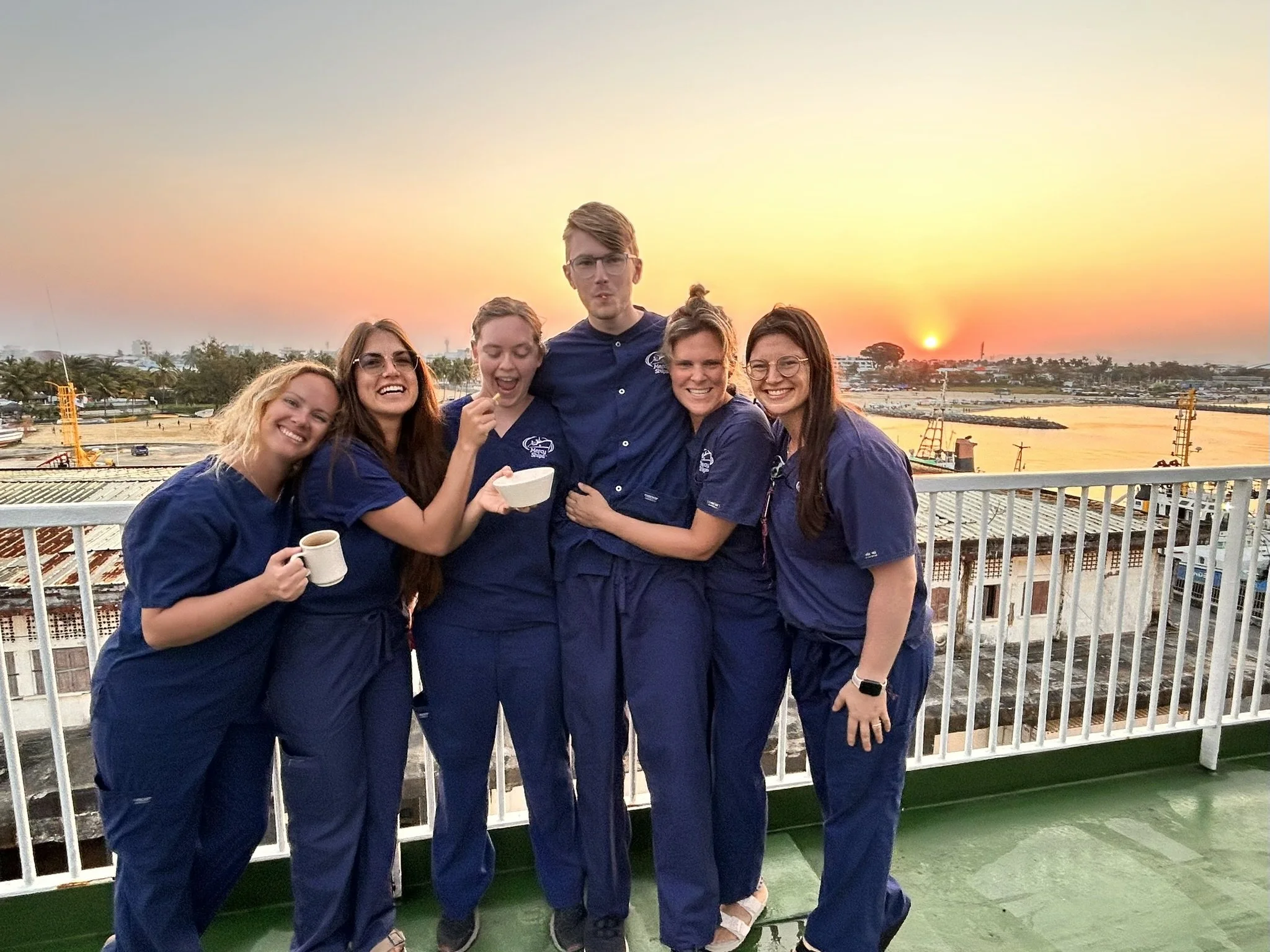
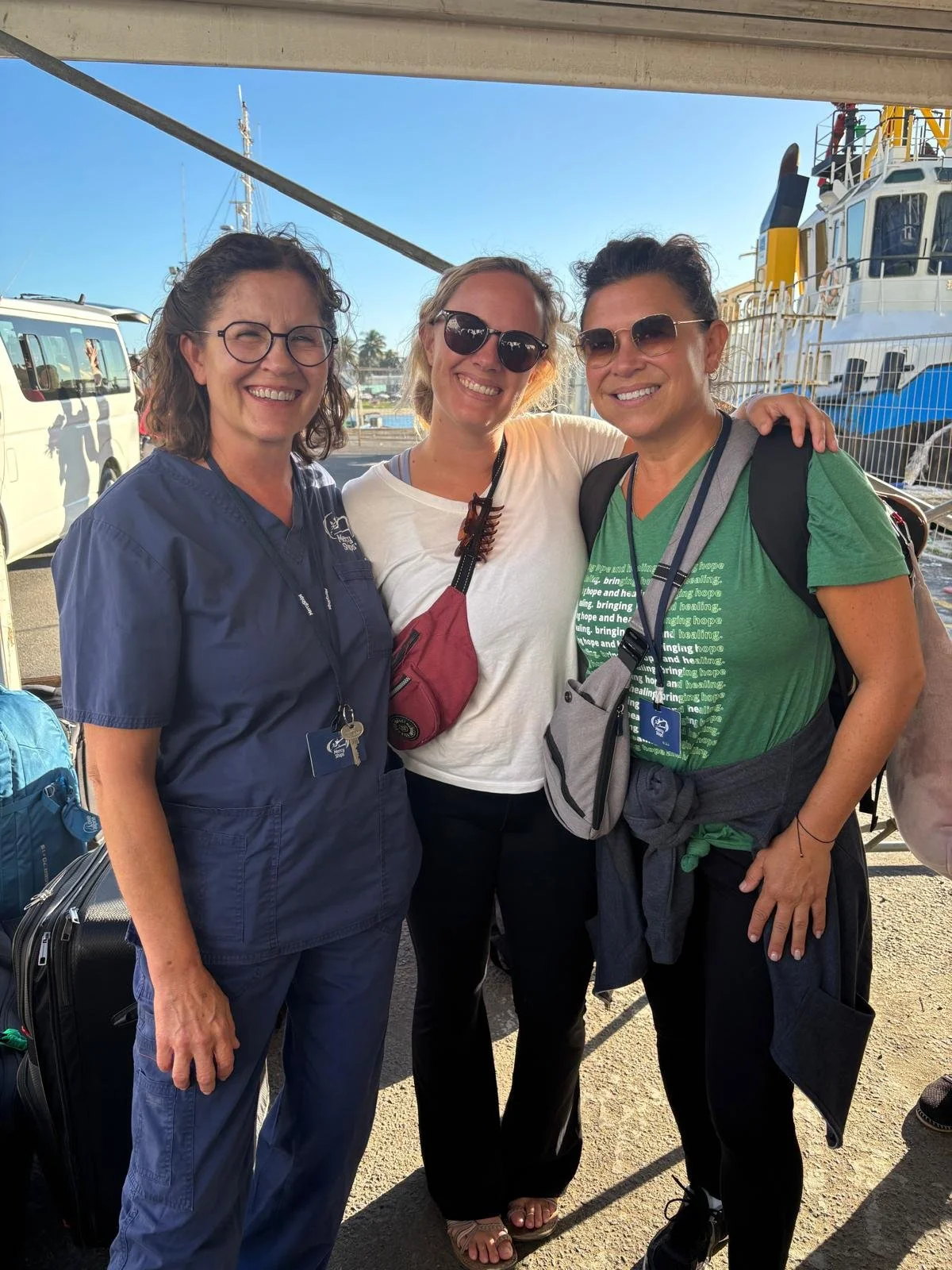
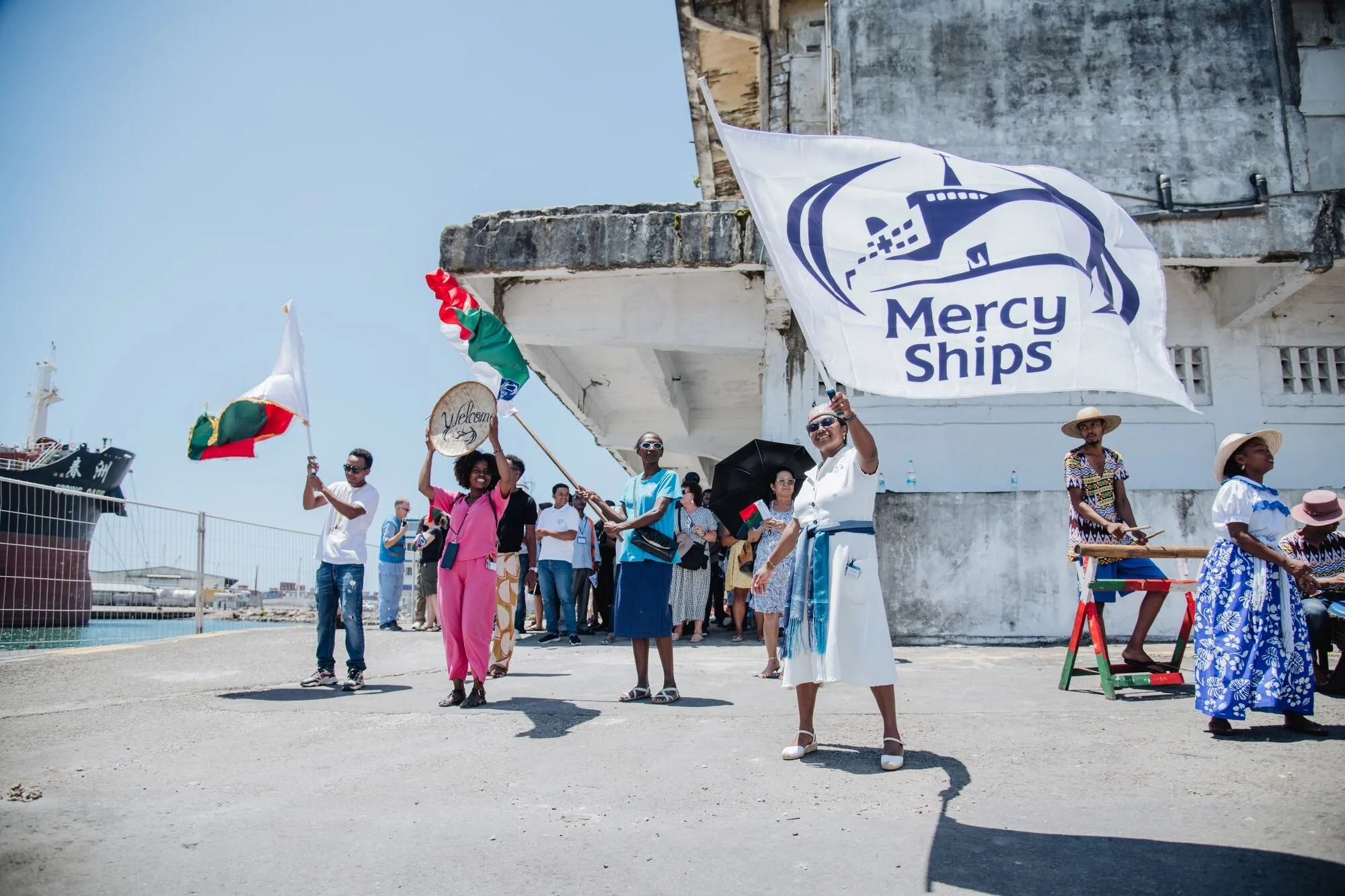
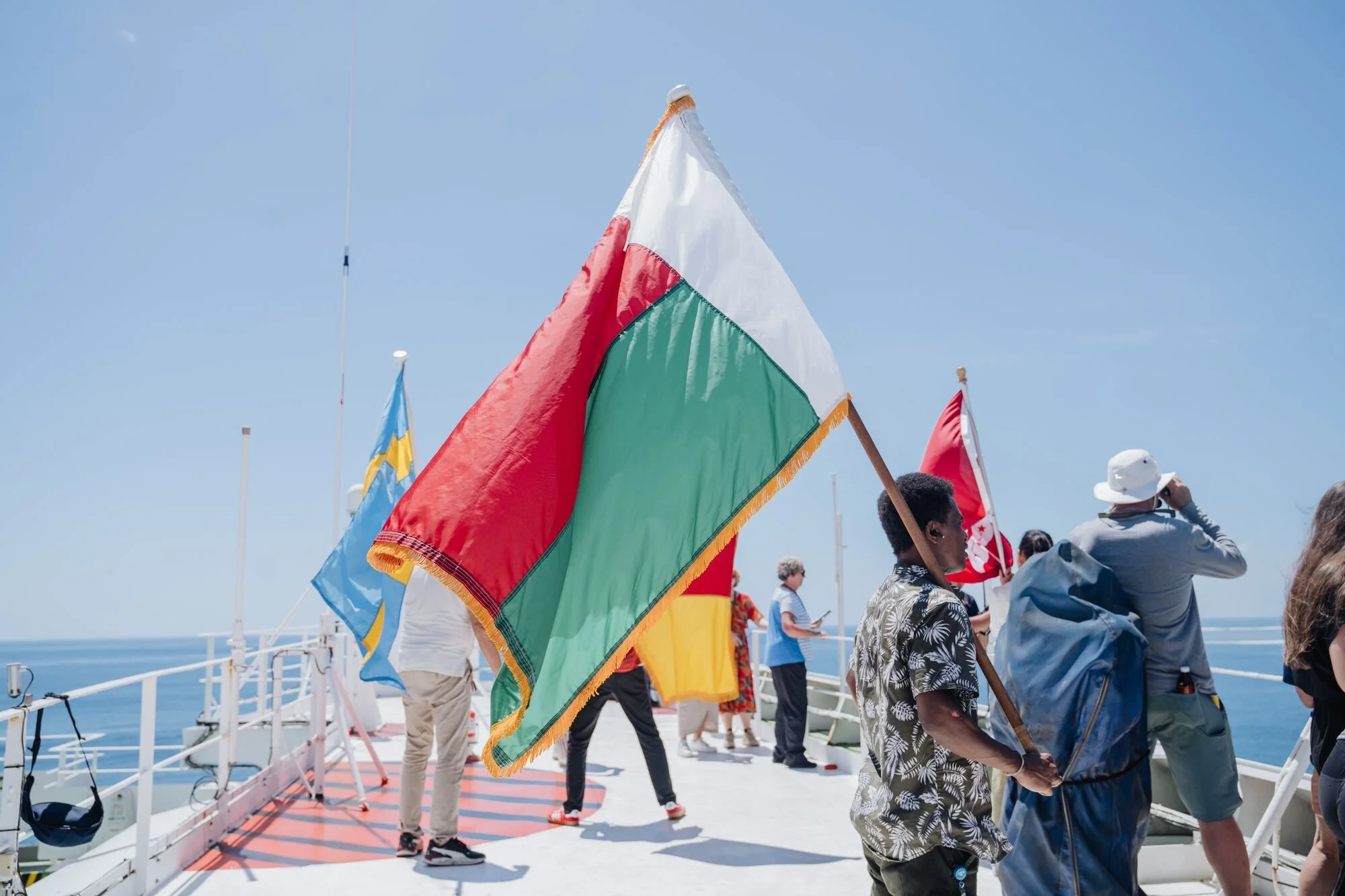
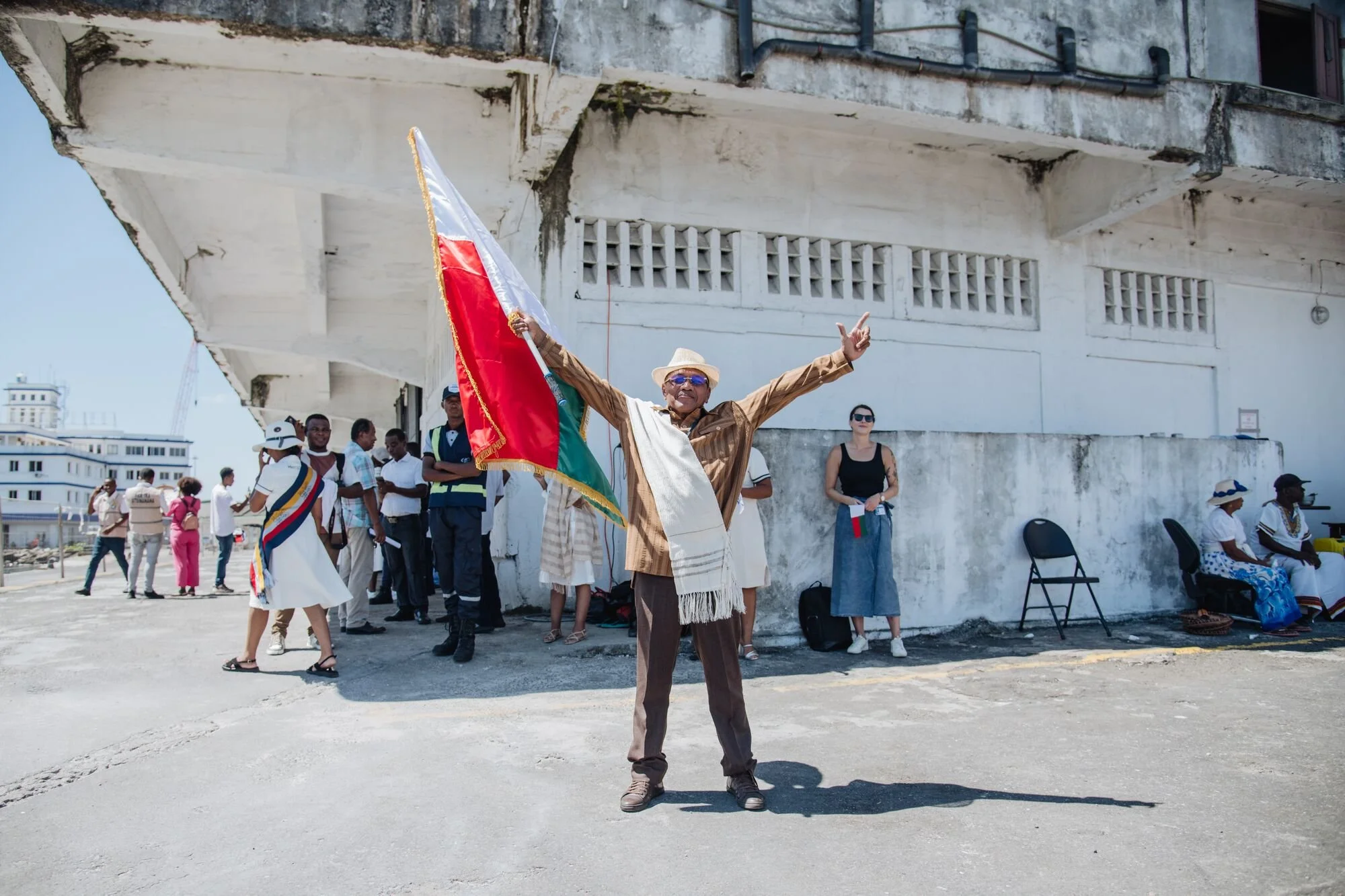




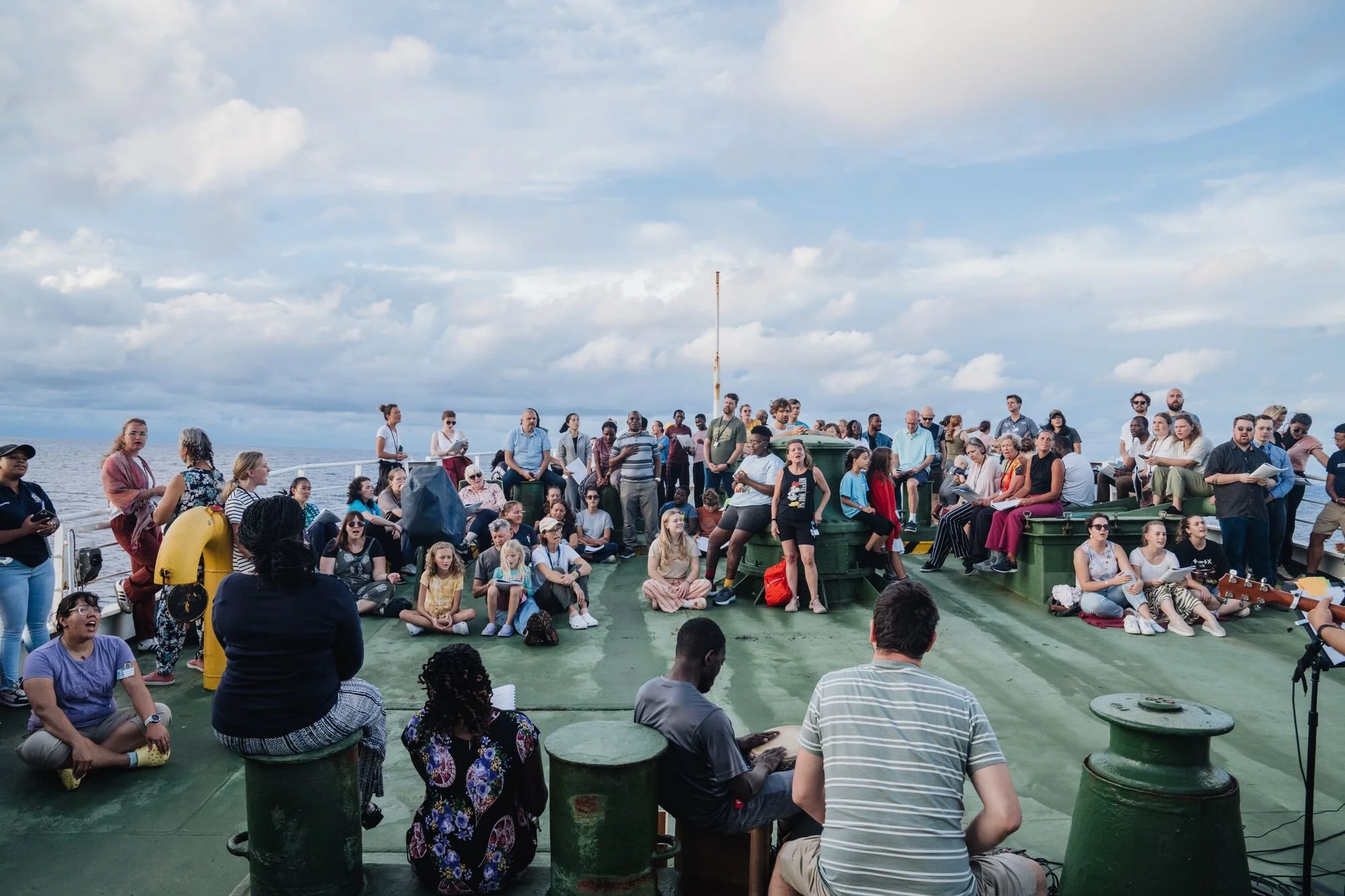

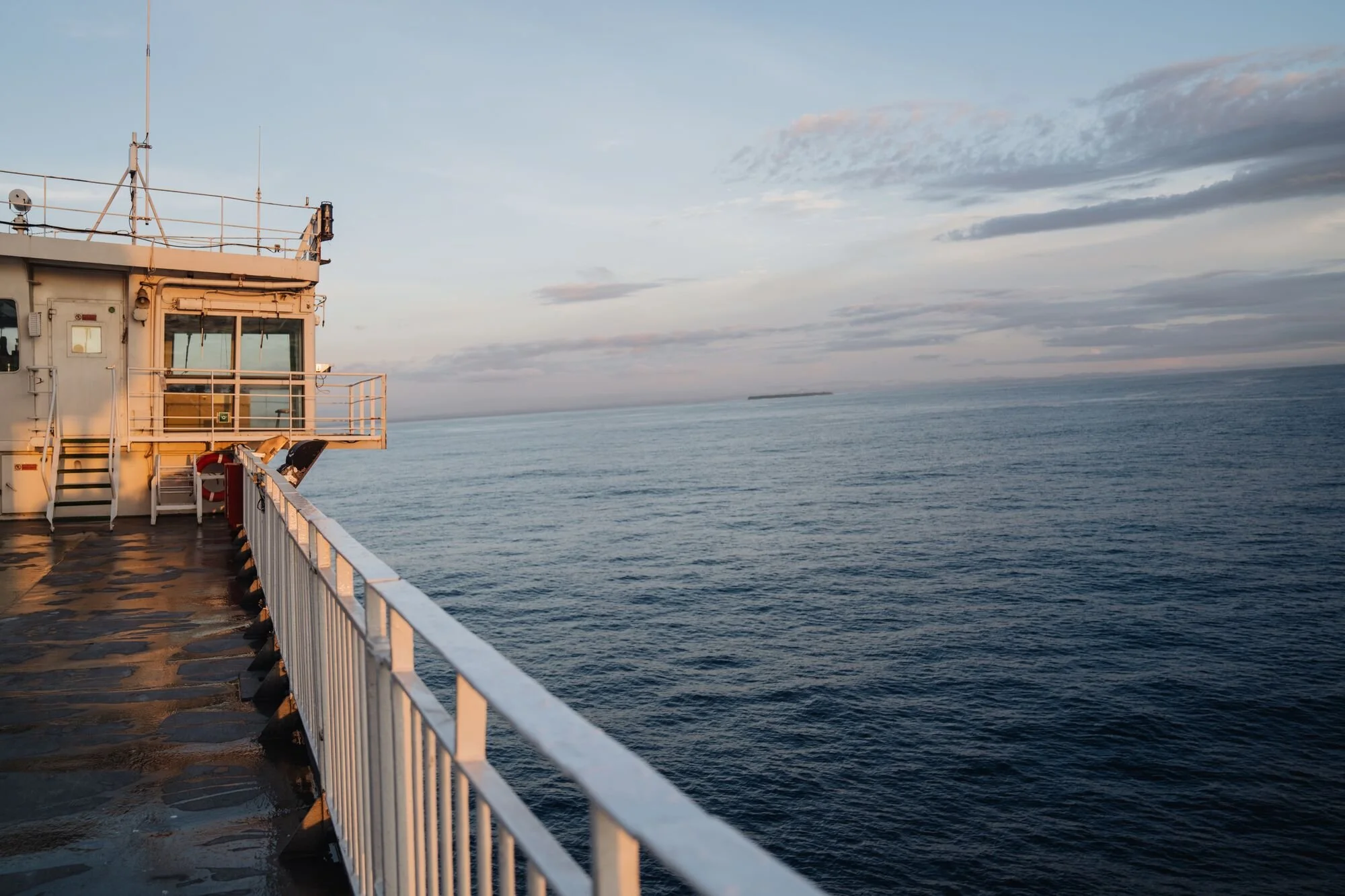
Tongasoa!
The Journey to the Ship
After nearly 20 hours of hopping from Los Angeles to Paris to Antananarivo, I finally set foot in Madagascar! My home for the night was the “San Cristobal”, tucked right in the heart of the capital. Privacy here? Let’s just say… not so much. I shared a room with two lovely ladies—who, fun twist, would later become two of my best friends aboard the ship. I spent the afternoon unwinding by the pool before hopping on a short flight to Toamasina, where the Africa Mercy awaited. As soon as I stepped aboard, I was greeted by my five new roommates and welcomed into ship life.
And just like that, my Madagascar adventure had officially begun!
Being the Newbie
The day began with a wake-up call for breakfast—served promptly from 06:30 to 08:00, not a minute earlier, not a minute later. At 07:45, I joined the new crew meeting, where I was introduced to the captain, chaplains, security officers, and some of the hospital administrators.
Afterward, I took myself on a self-guided tour of the Africa Mercy. It didn’t take long—8 decks and a short few minutes walk from one end of the ship to the other. The ship was originally built in Norway to ferry train parts.
I scoped out the gym—slightly outdated, but functional. One is tucked away on Deck 2 near the onboard “jail” (yes, apparently maritime law requires ships to have one). There’s also a small rack of free weights down on the dock, which I like because it gets me off the ship and into some fresh air.
Adjusting to ship life has been… an experience. Privacy doesn’t exist. Nowhere to take a private phone call, and if you sit alone for more than two minutes, at least five people will join you to chat. Sometimes it’s lovely. Sometimes I want to scream, “LEAVE ME ALONE, I JUST WANT PEACE!”—but of course, then you risk looking like the ship’s resident hermit. Overall, it has been a treat to make so many different friends from all over the world. Now I have a reason to go to Belgium, Holland, and Italy next Summer!
I set up my crew bank account (very handy). I give them USD, and in return I can withdraw Malagasy ariary at a much better rate—about 4,000 ariary to the dollar. I also stopped by the crew clinic to confirm my vaccinations, check my vitals, and—somewhat ominously—record my starting weight, presumably to track how much I’ll gain in my two months here! :)
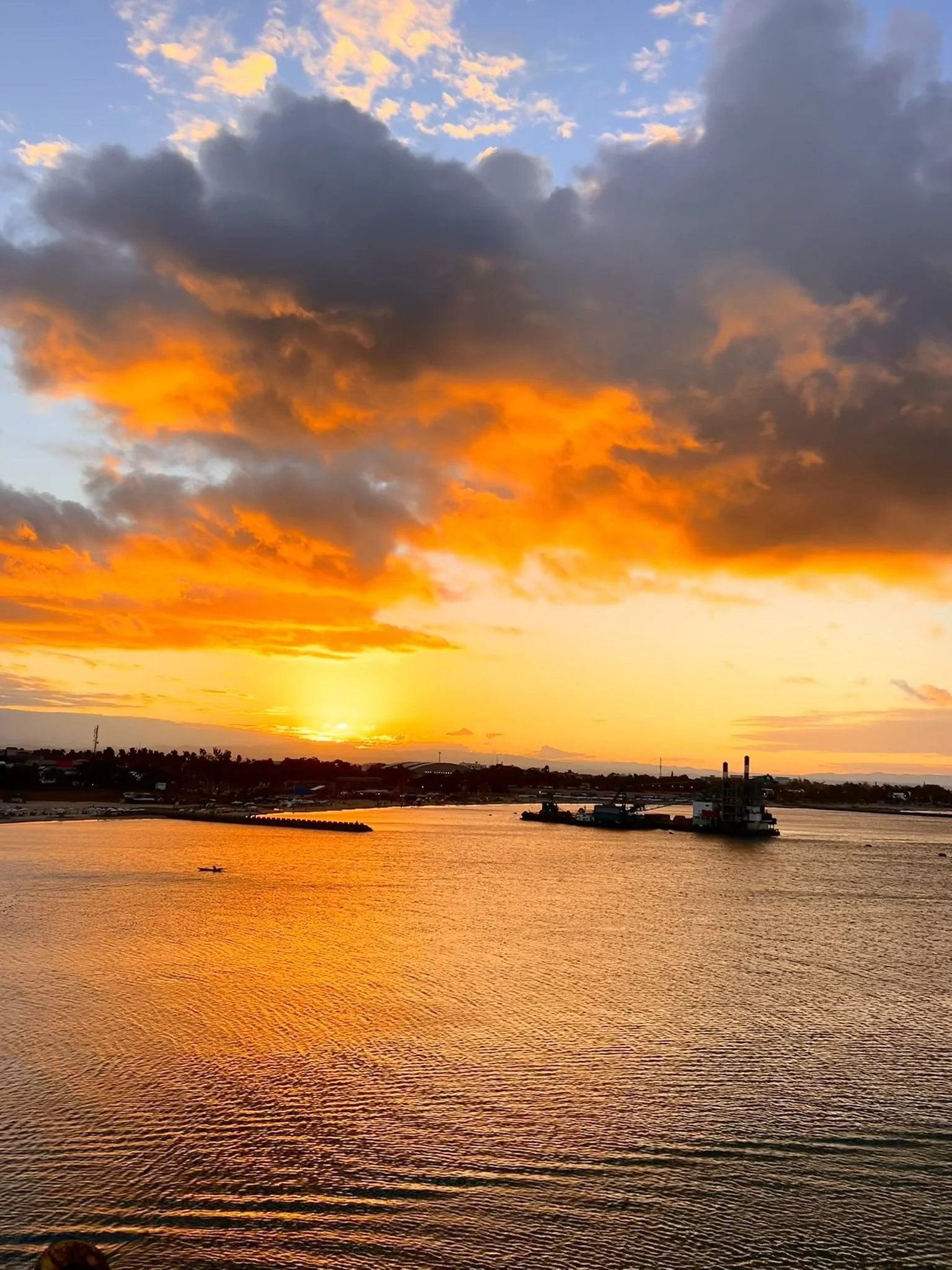
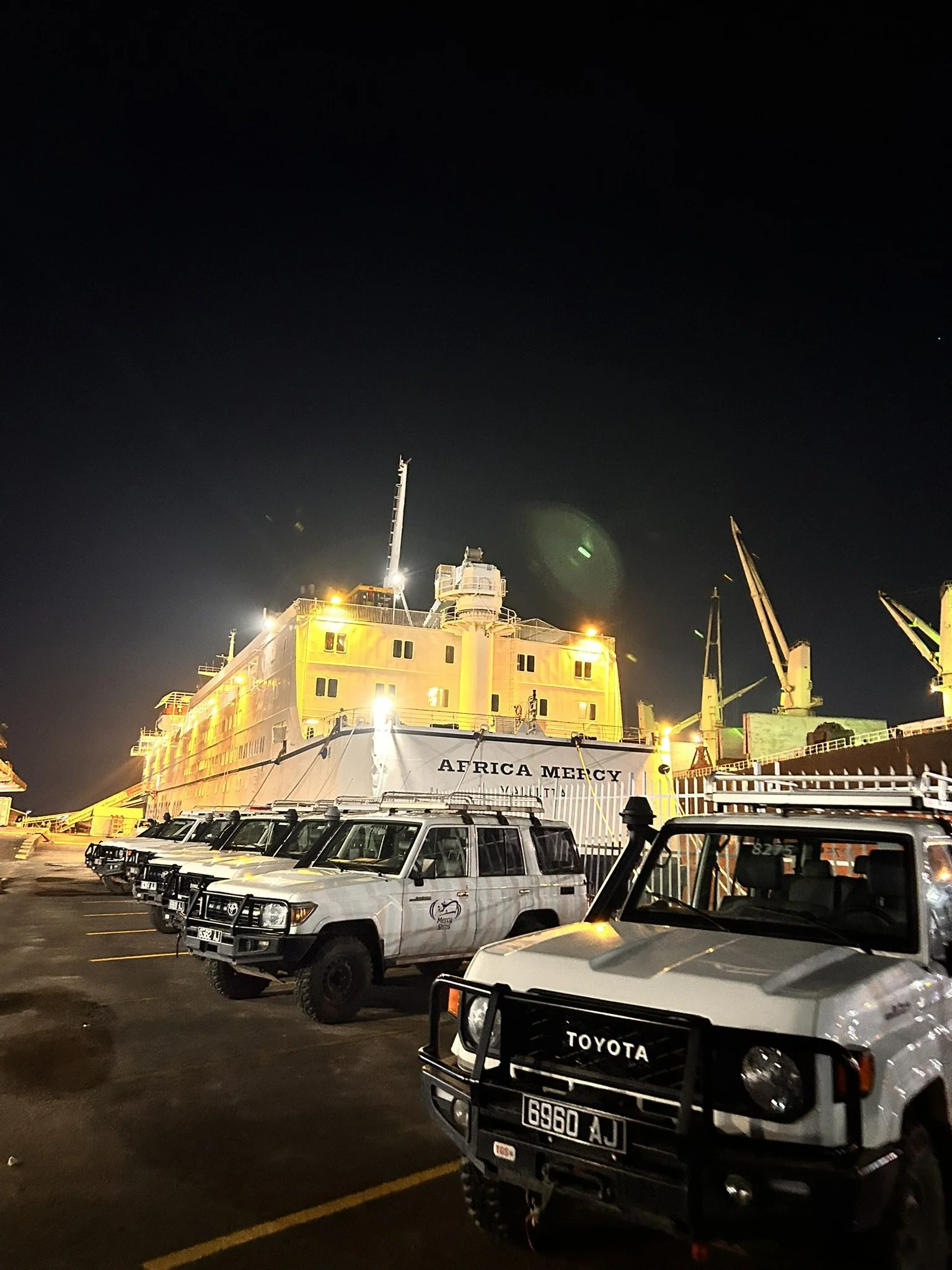
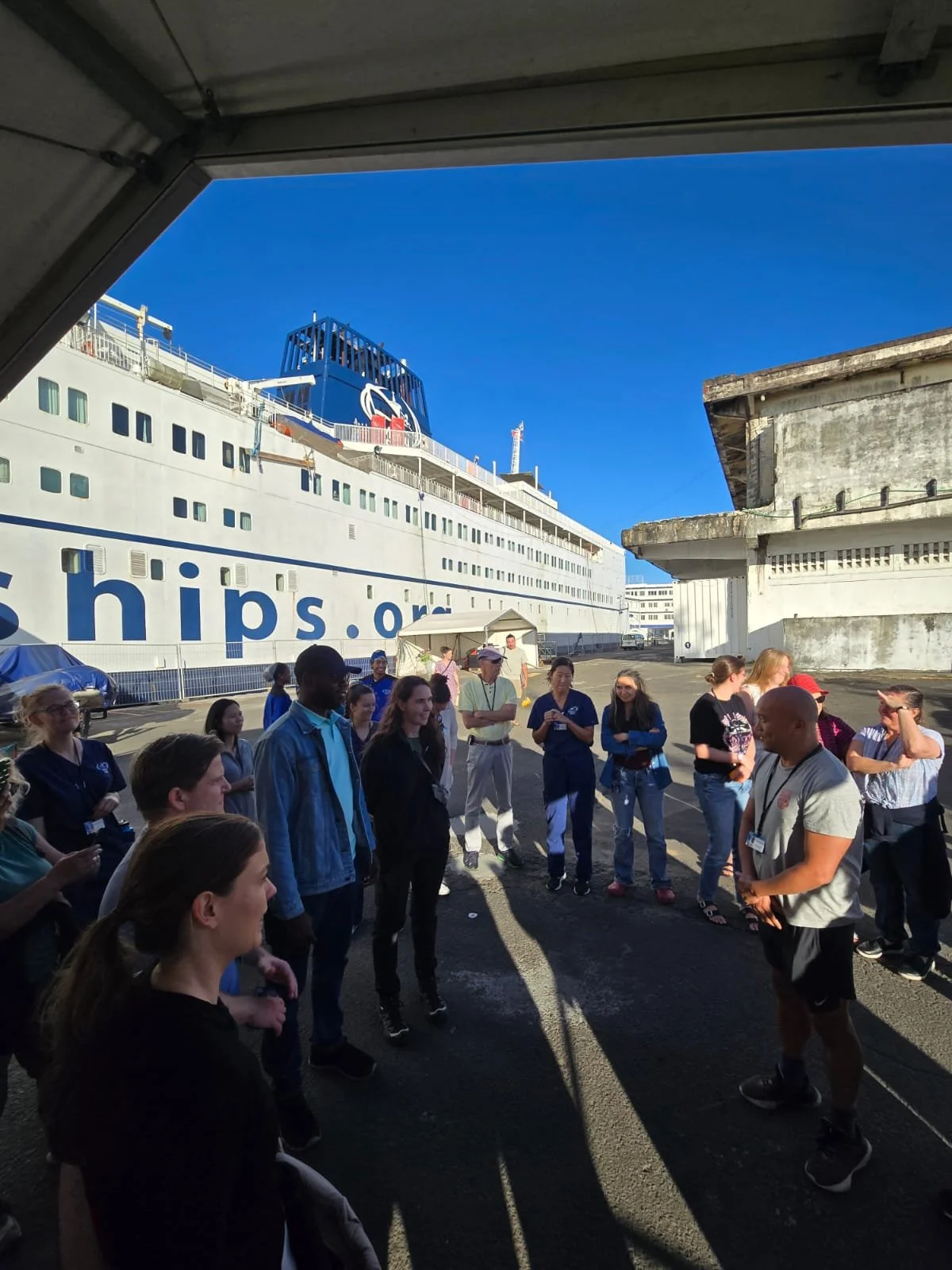

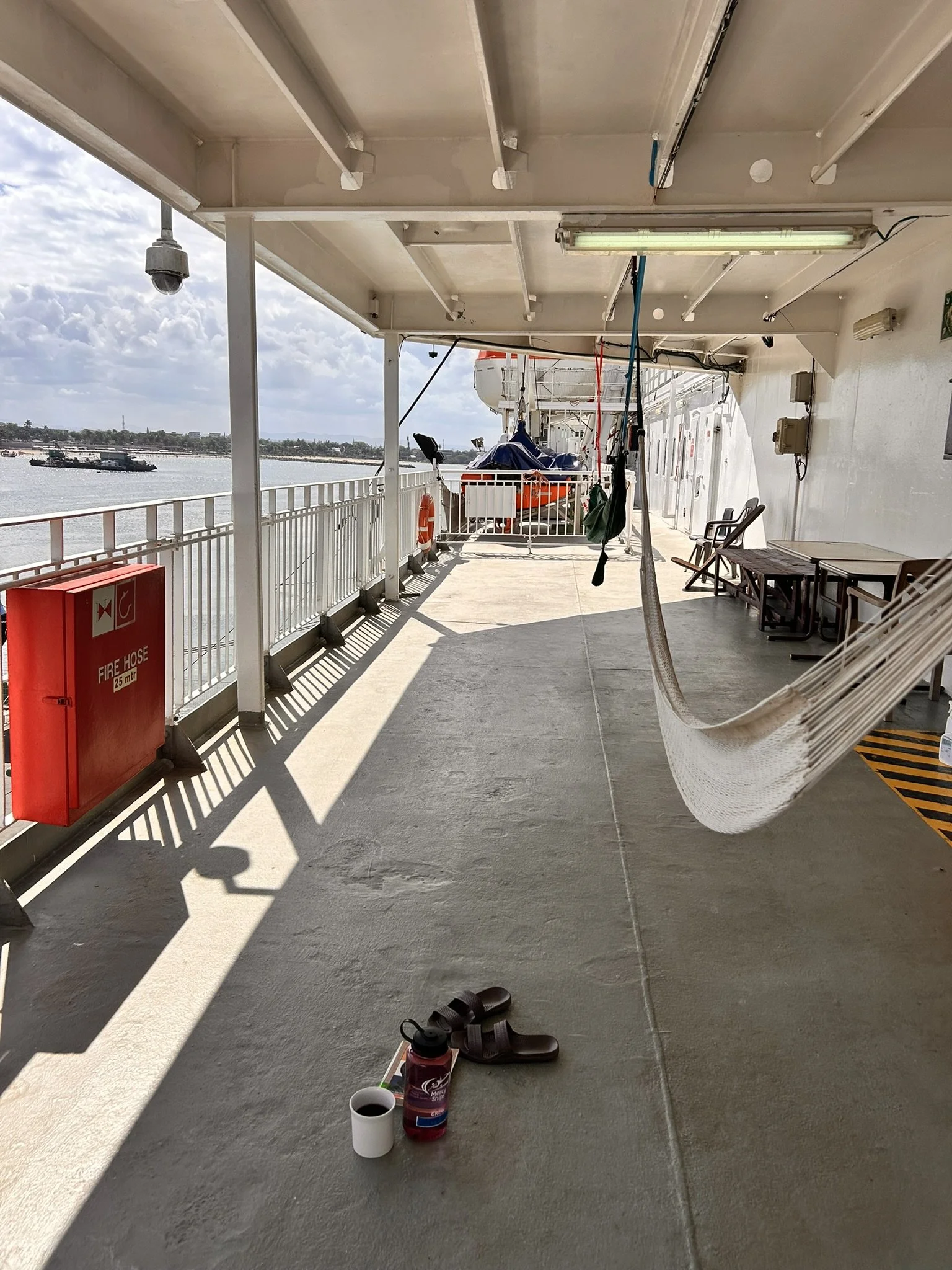
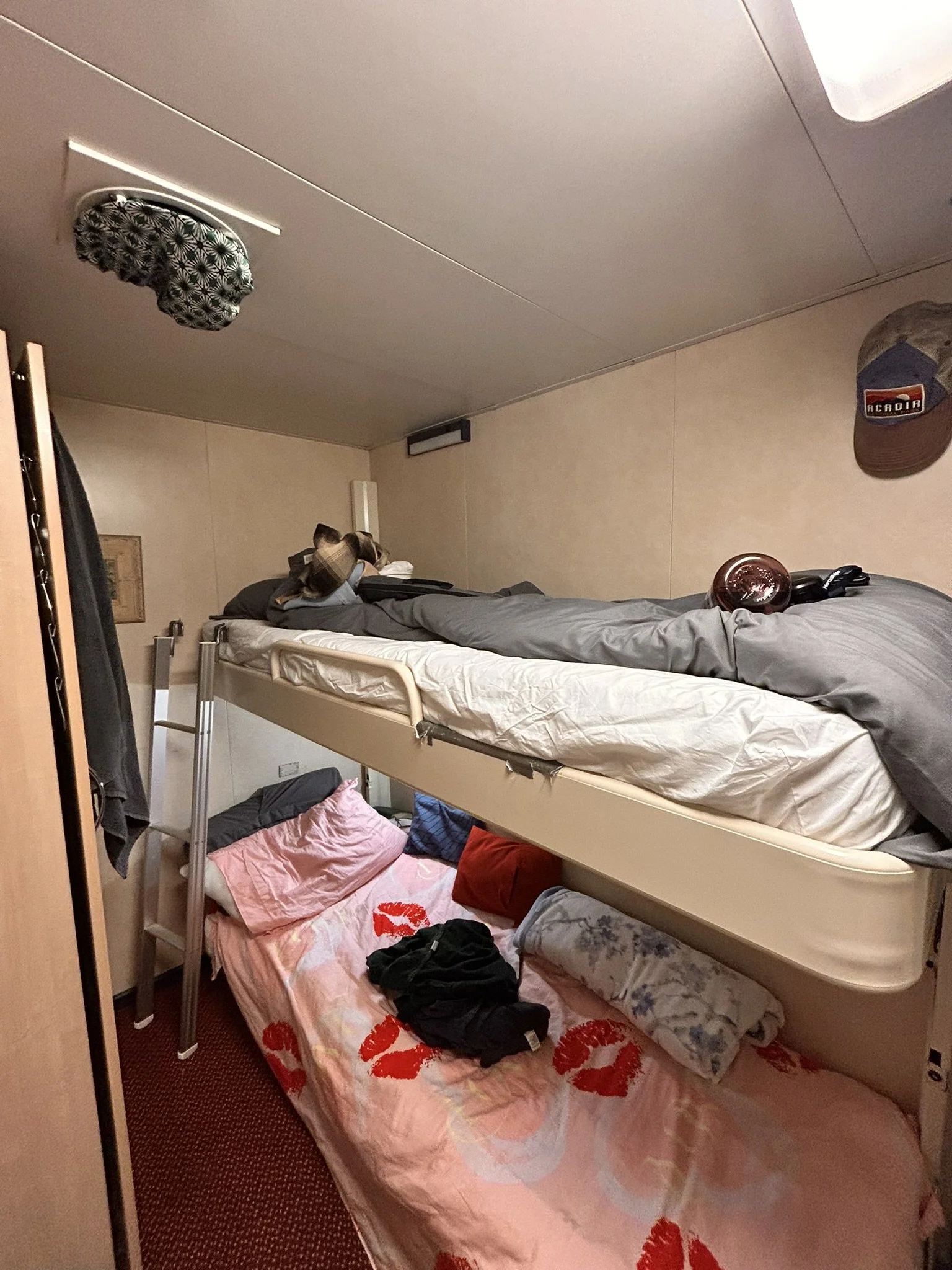
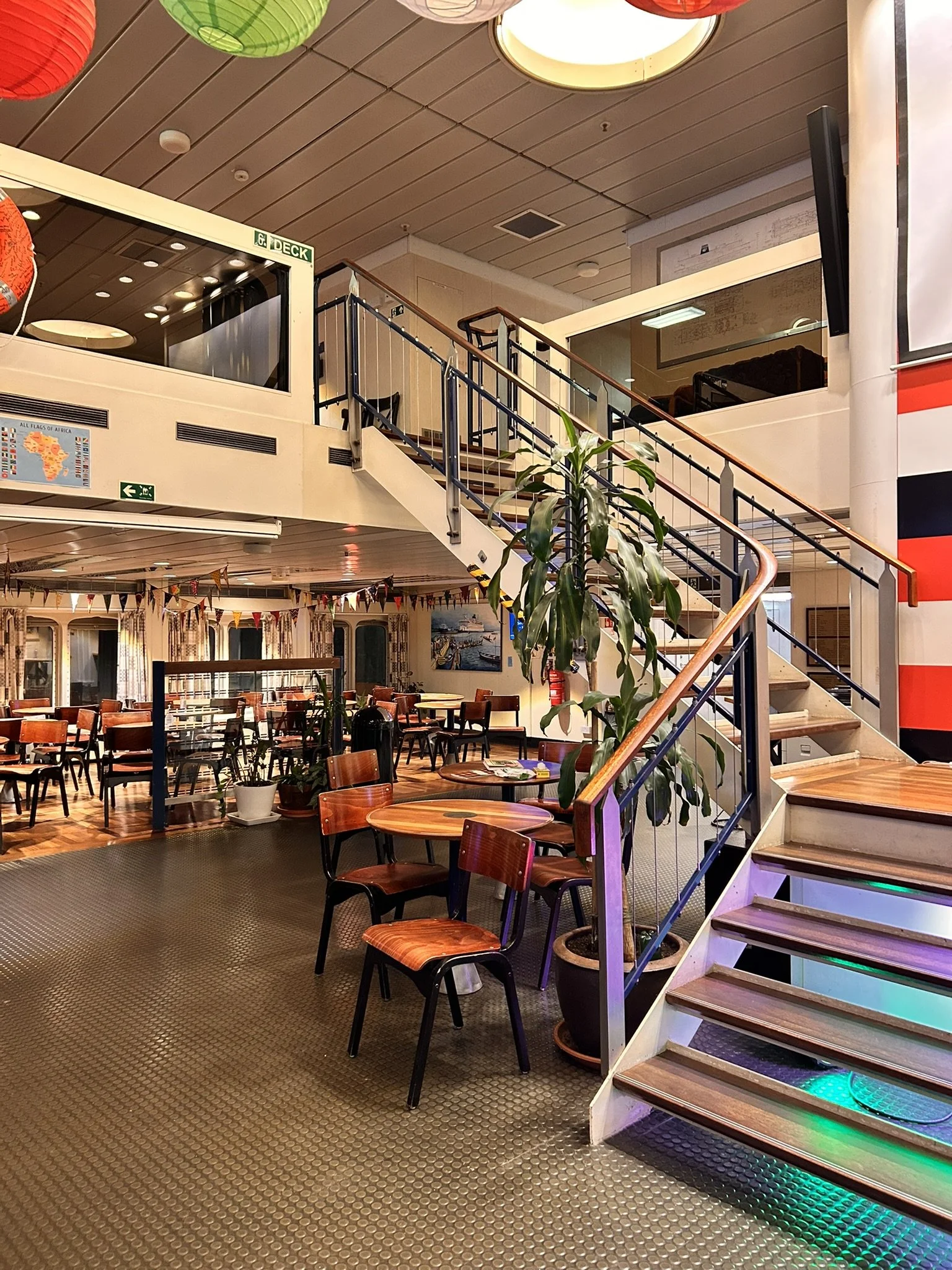
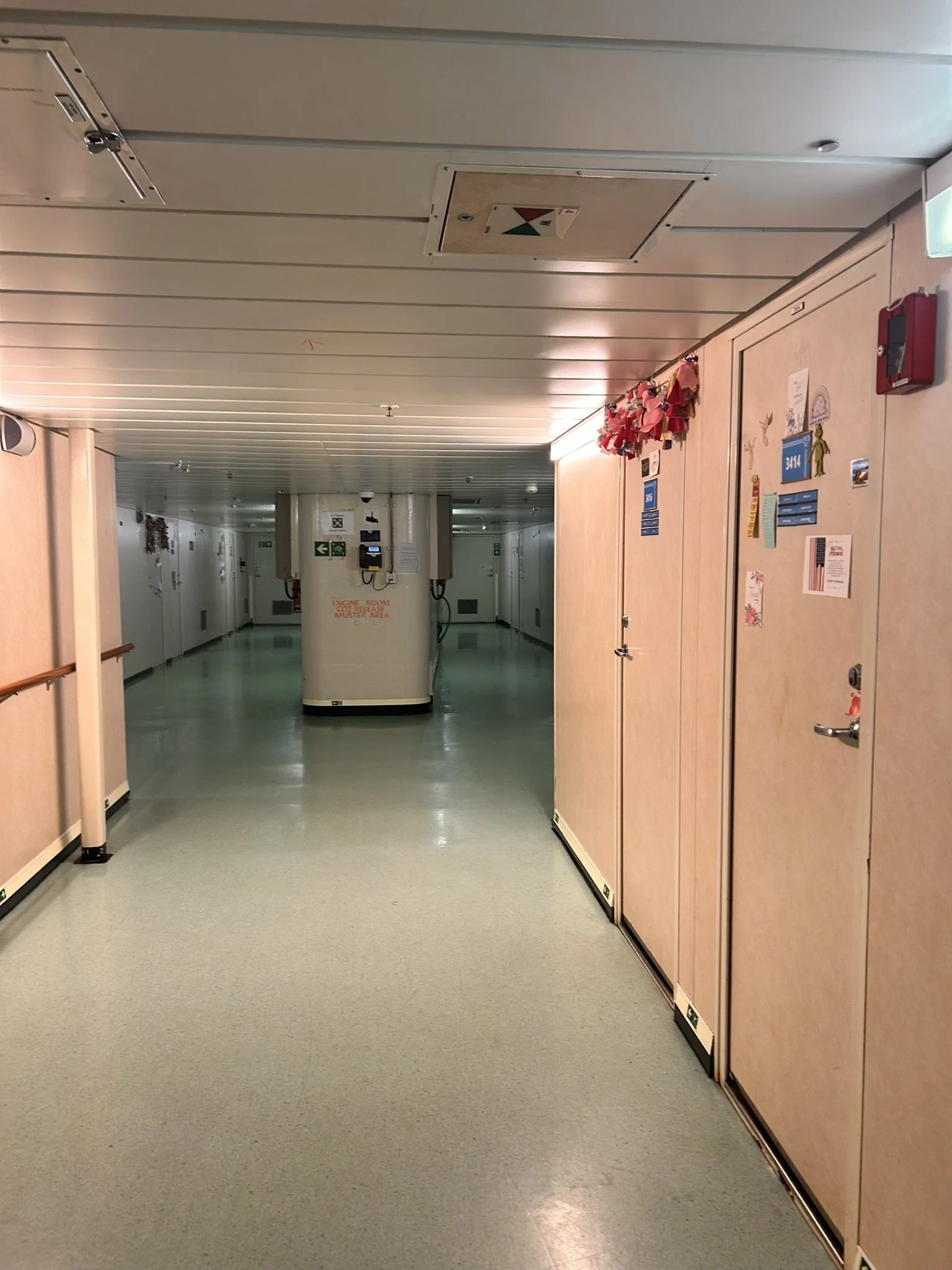
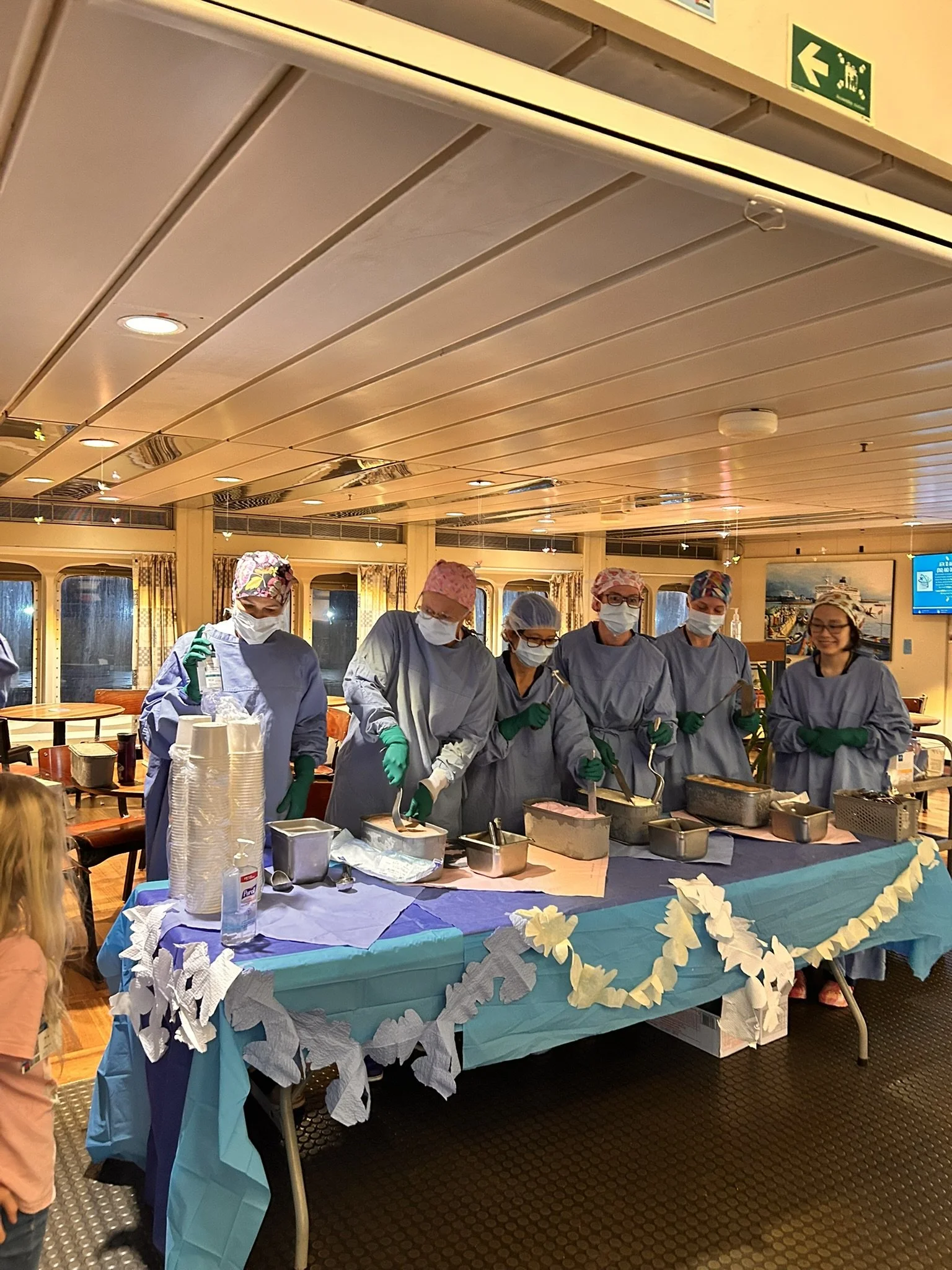
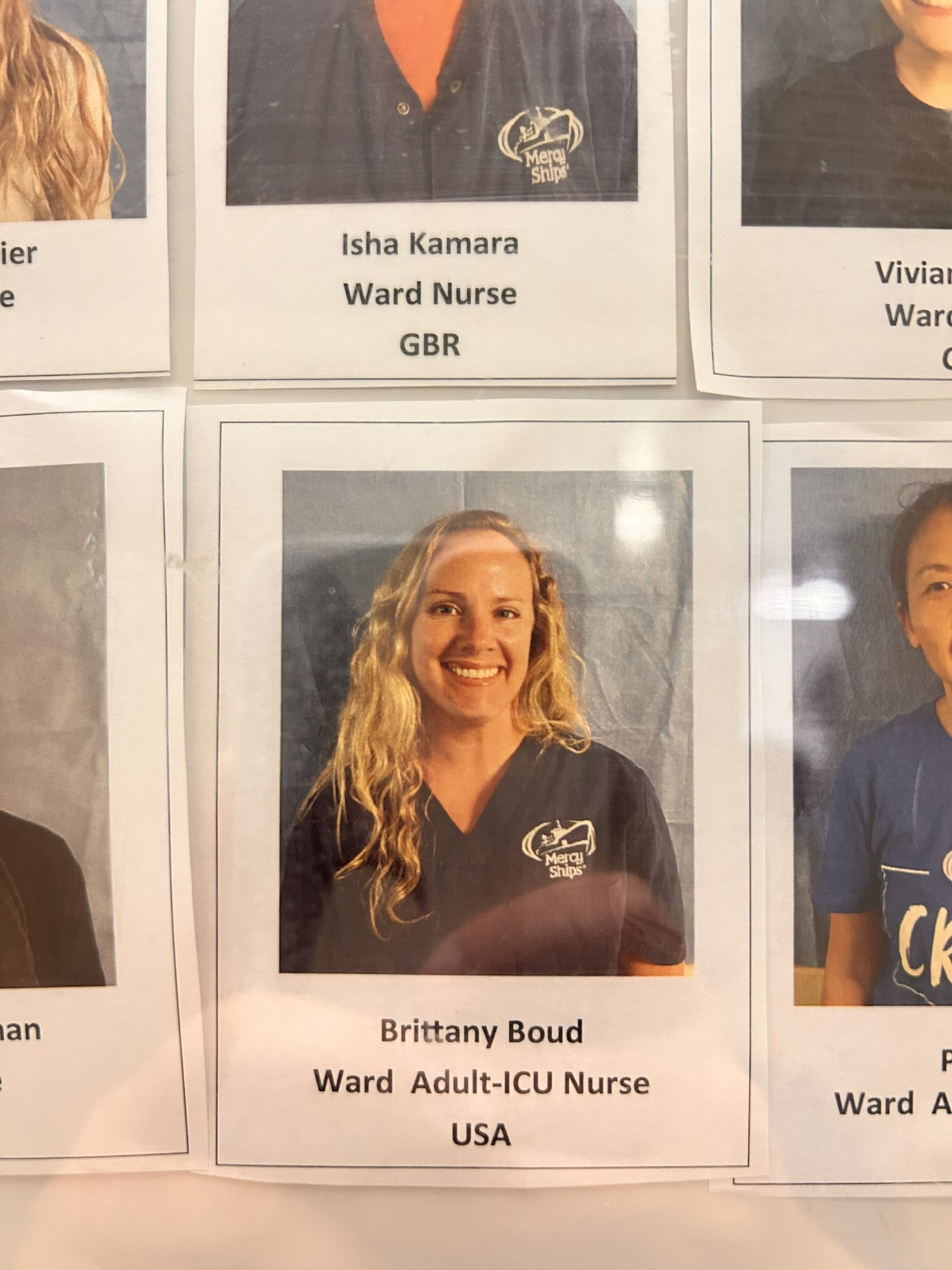
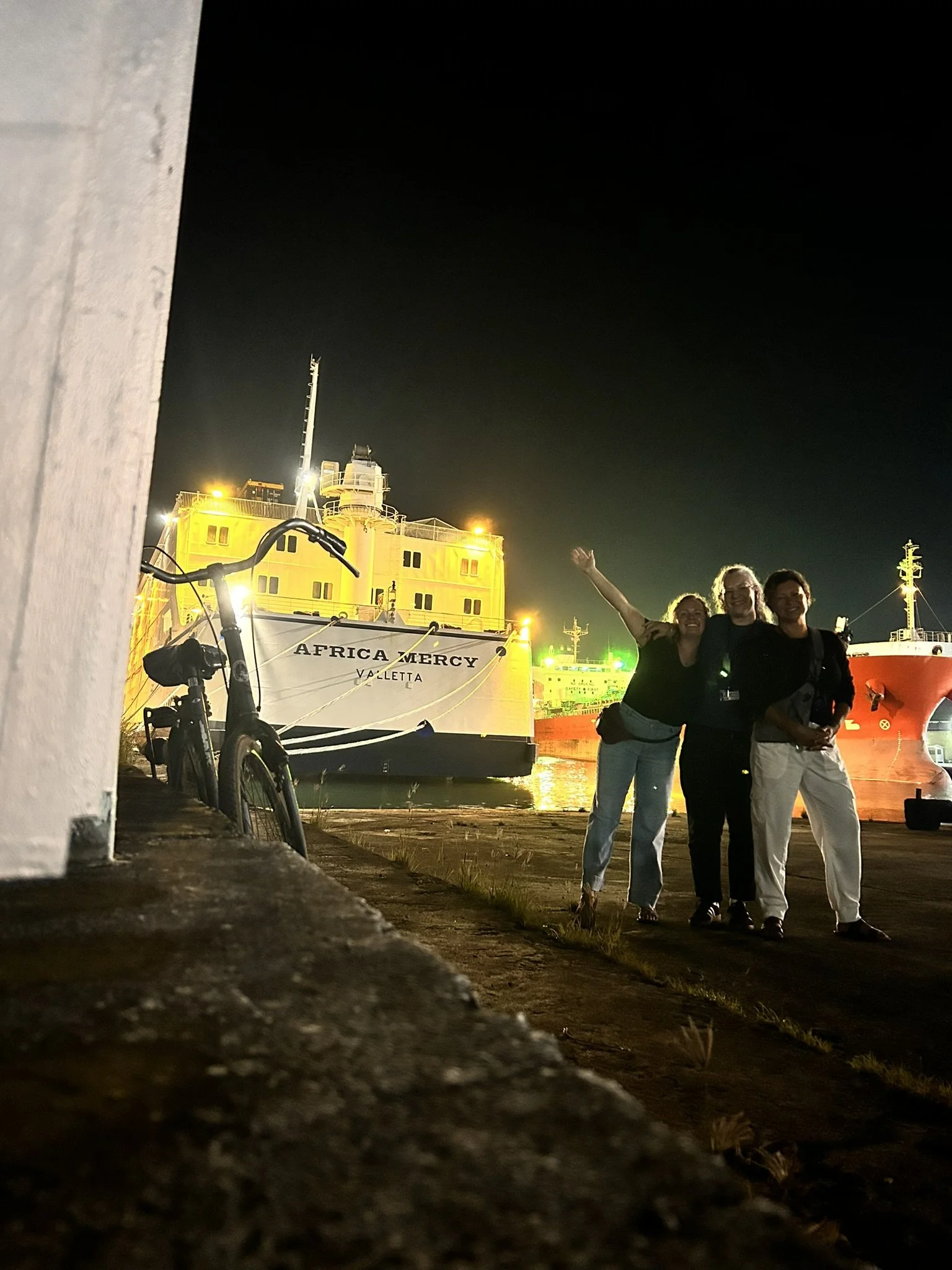
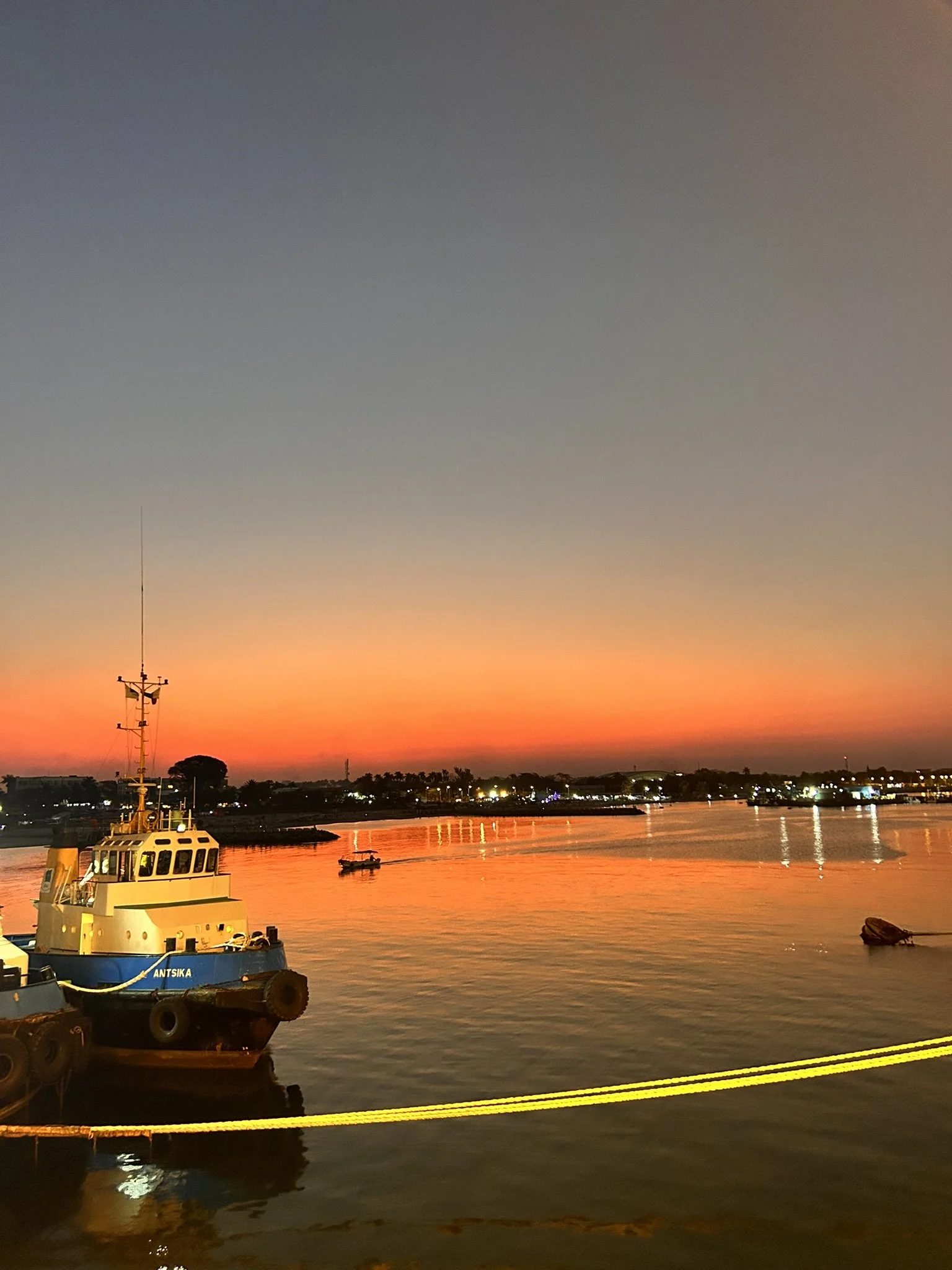
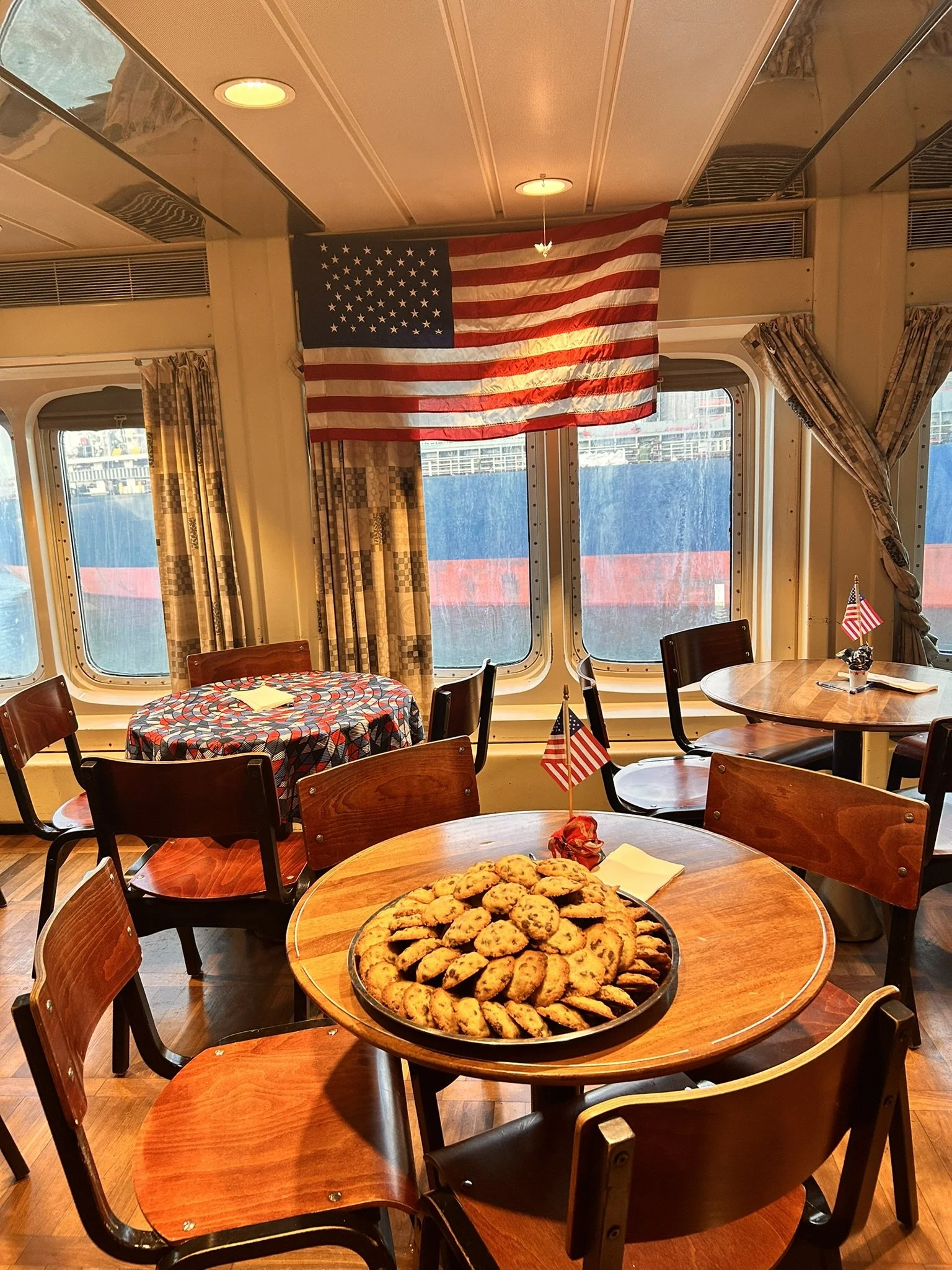
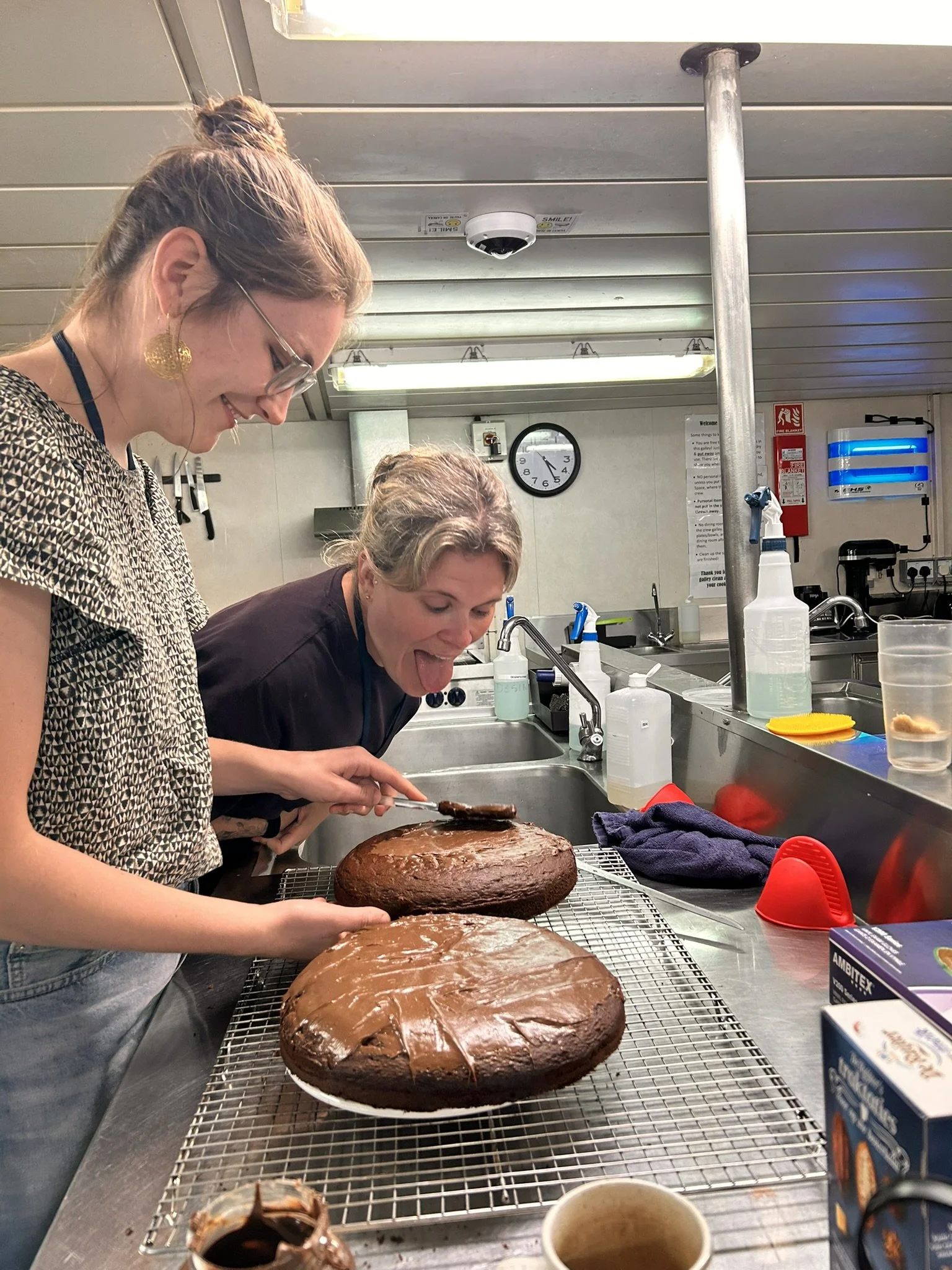
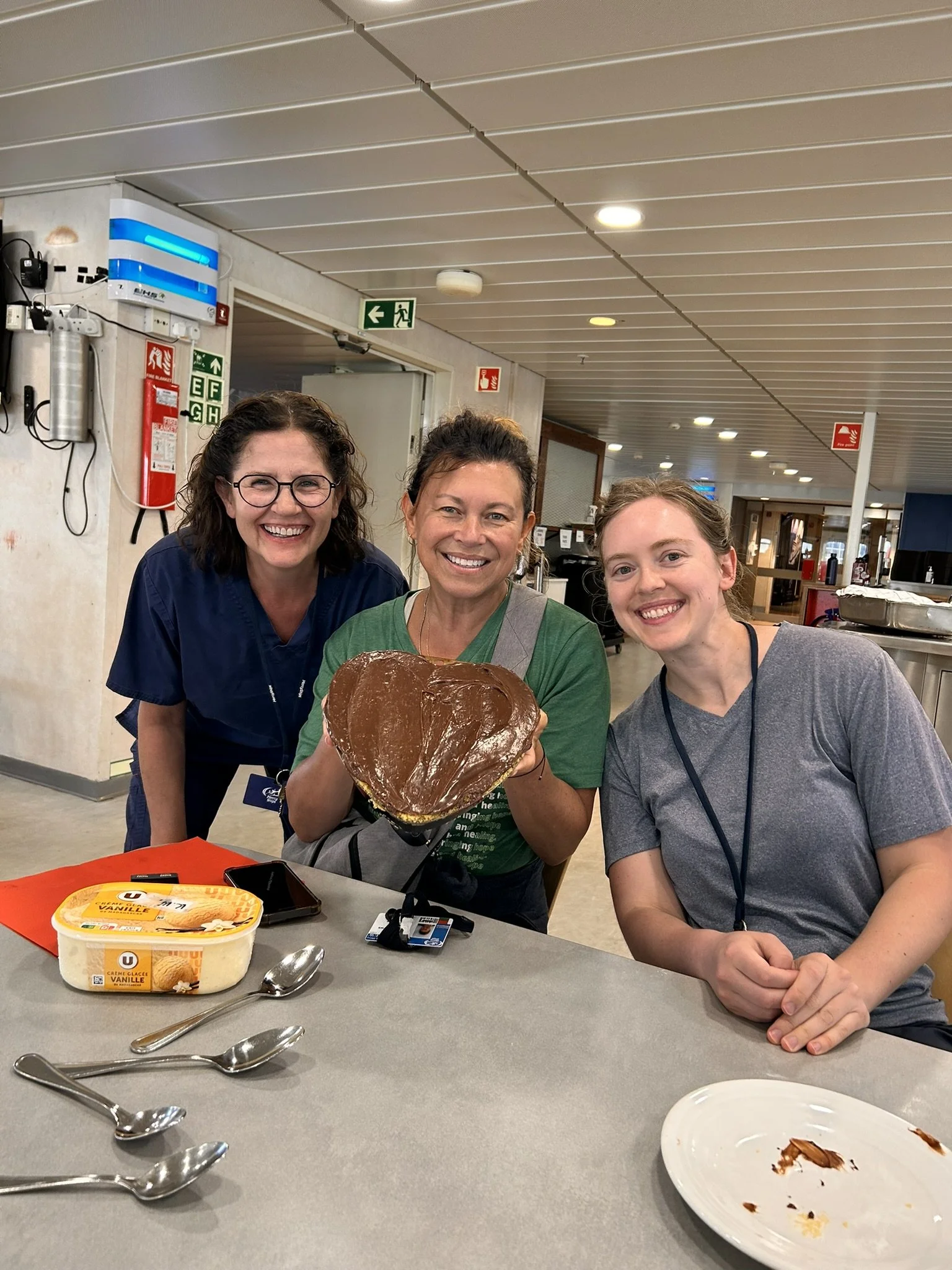

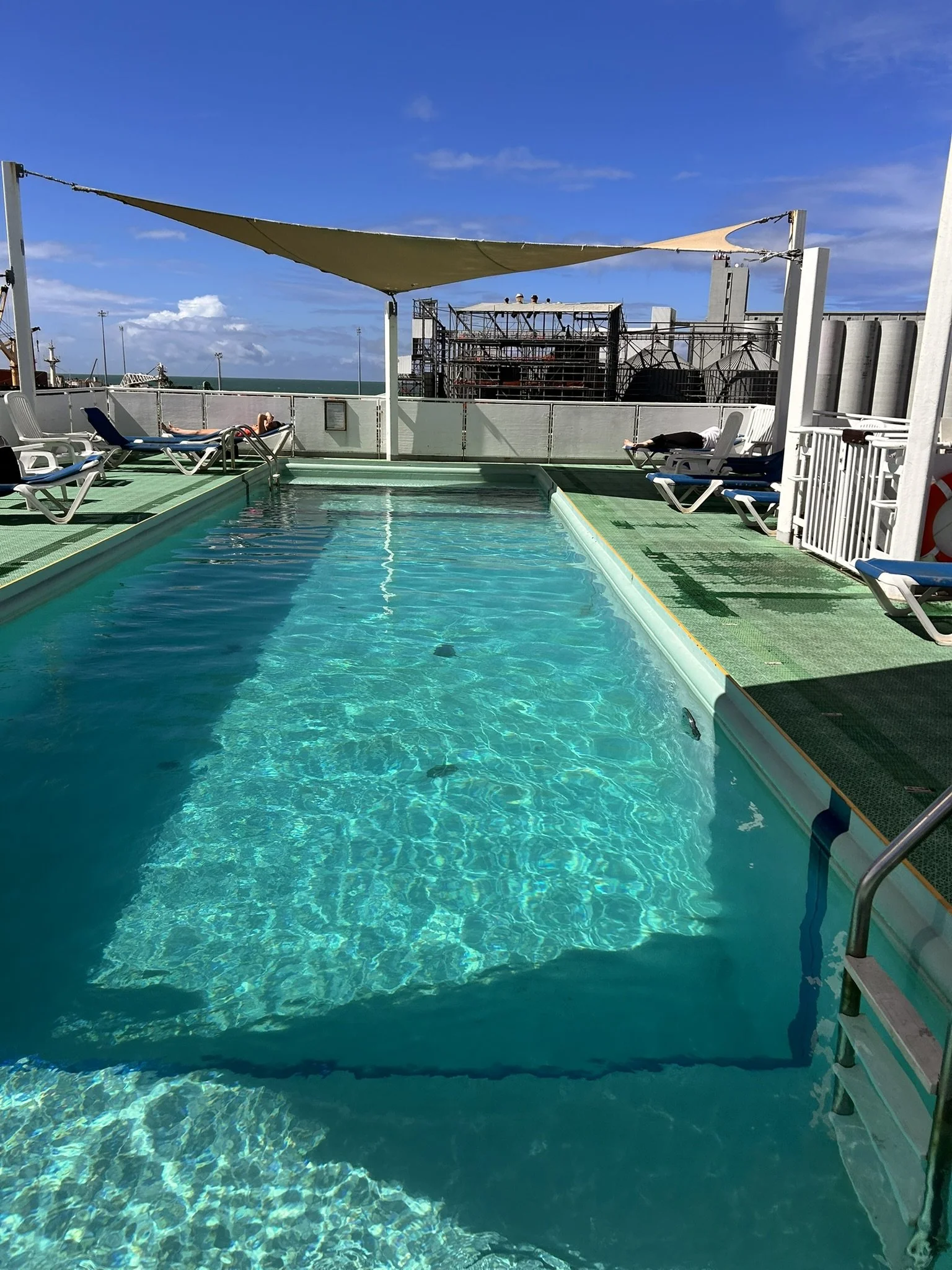
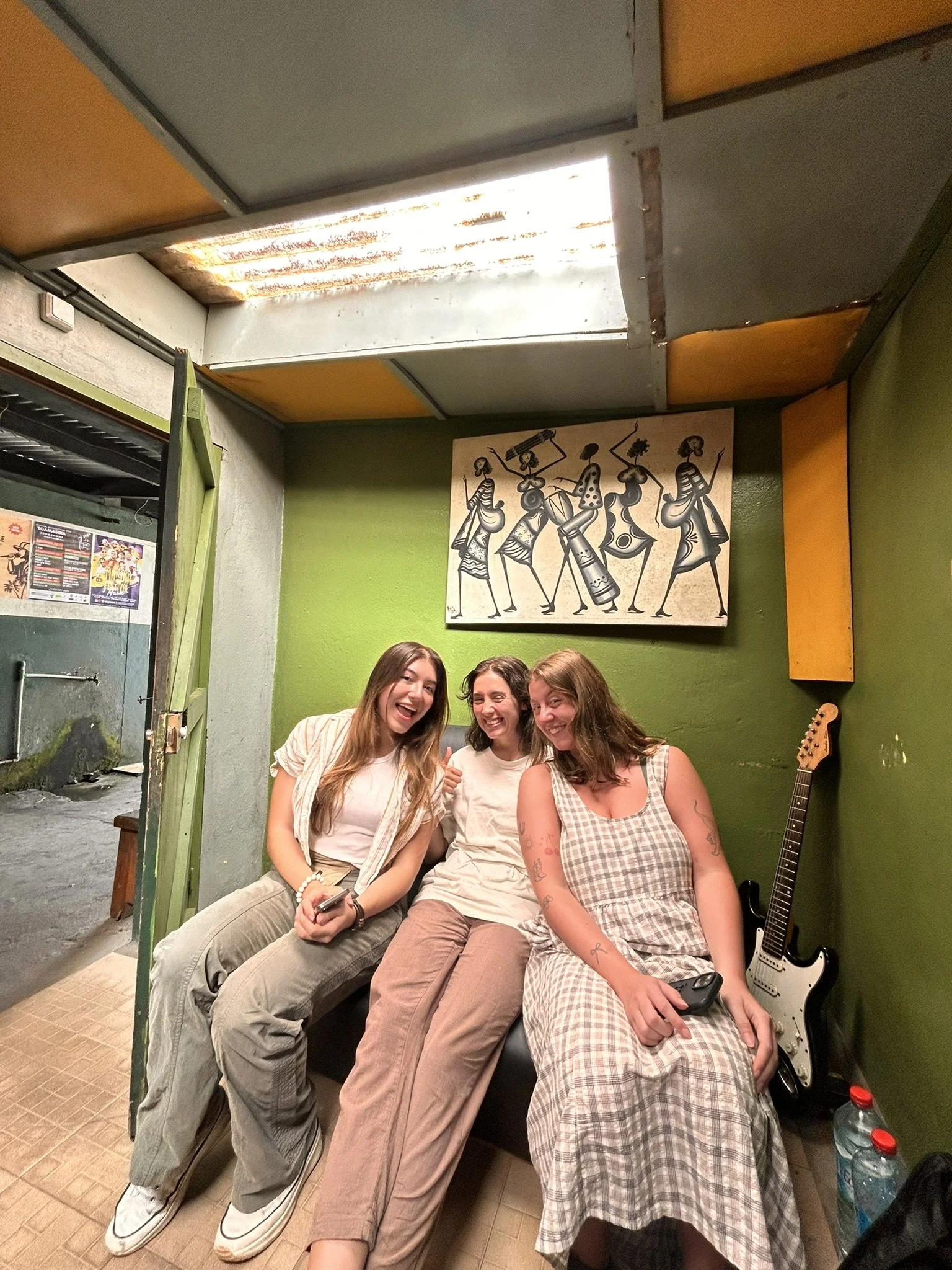

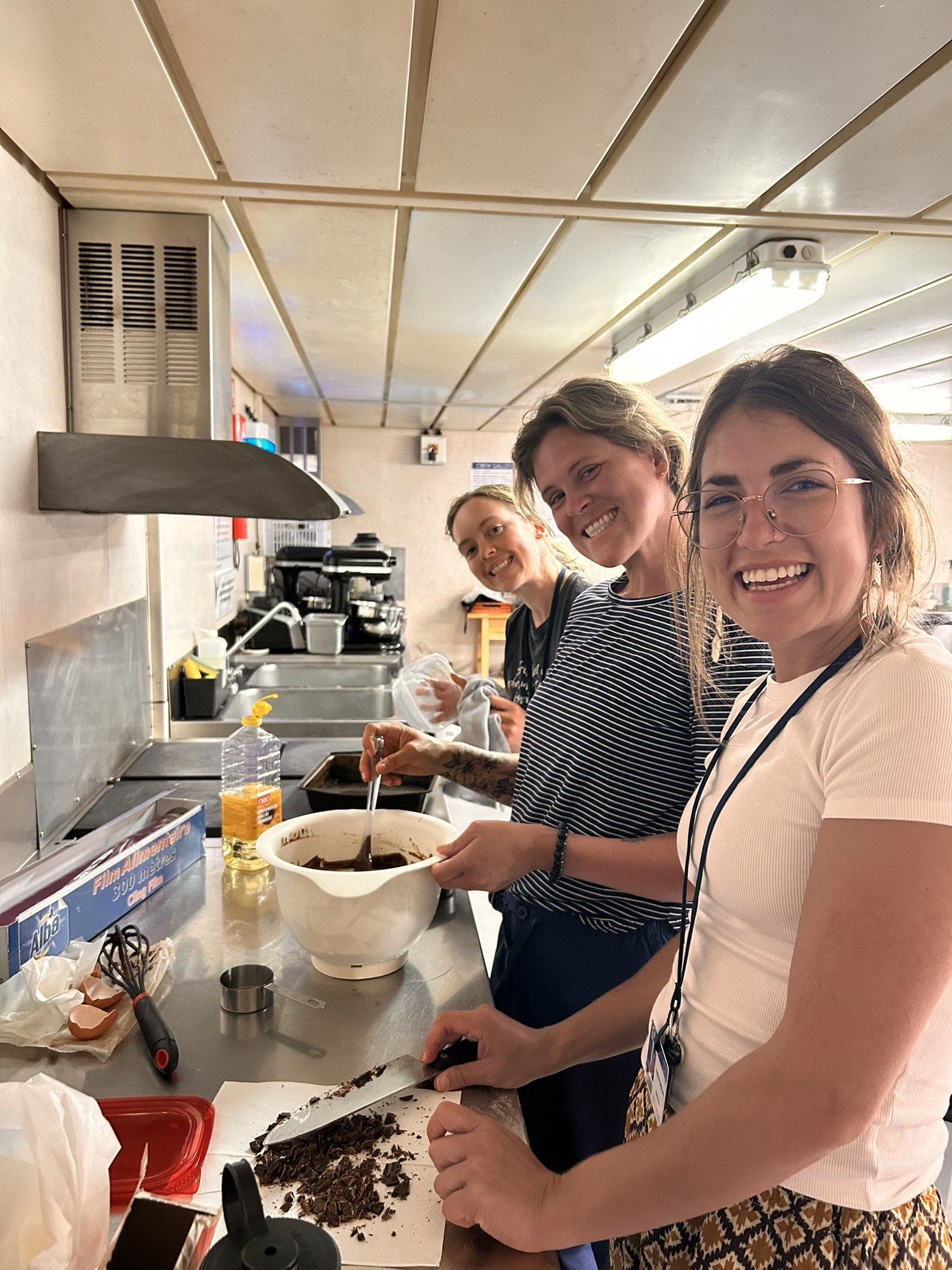
Ship Life.
Imagine this: your alarm goes off at 06:50, your shift starts at 07:00… and you still have time to hit snooze. That’s because my “commute” to work is a 30-second stroll from my six-berth cabin to the hospital wards aboard the Africa Mercy. Even walking at a leisurely pace, I’m at work in under a minute. Life at sea definitely has its perks.
Our ward shifts run for eight hours with a 30-minute meal break, rotating between mornings, evenings, and nights. Depending on how many patients we have onboard, we usually work around five shifts a week.
When we’re not on shift, you’ll find us… eating. And here, mealtimes are sacred. Breakfast runs from 06:30–07:45, lunch from 11:30–13:00, and dinner from 17:00–19:00. Miss the window and your options shrink to café snacks and coffee. More than once I’ve traded a proper breakfast for a 09:00 Snickers bar.
Now, about the cabins—picture six women from six countries (USA, Australia, Germany, Netherlands, UK, and Nigeria) sharing one small space. We juggle different cultures, sleep patterns, and ideas of “tidy” living. Most days we make it work, thanks to unspoken bathroom diplomacy and a weekly deep-cleaning rota. Showers are strictly two minutes, and no matter your size, the clingy shower curtain will find you. Every. Single. Time.
Life aboard isn’t glamorous, but it’s full of quirks, challenges, and laughter—exactly what makes this floating hospital feel like home.
Our pool—technically perched on Deck 9—was a swampy shade of green when I first arrived. I wisely skipped the inaugural dip, and sure enough, a week later it transformed into sparkling, crystal-clear water. On a hot Madagascar day, nothing beats that cool plunge, followed by lazing in the sun on the deck chairs with the ocean breeze as your soundtrack.
Life onboard is social by default—there’s no hiding, even if you tried! From book clubs and bachata classes to Bible studies, game nights, and impromptu chats in the corridors, there’s always something to do and someone to meet. When I do venture ashore, I love running along the boardwalk in Toamasina, greeted by smiling locals offering tuk-tuk rides or fresh coconuts—it’s like stepping into a welcome party every time.
Laundry Room Politics - Ah, laundry, the true battleground of ship life. Time slots are booked in advance, and if you’re even a minute late, your clothes may be whisked away to… wherever destiny (or another crew member) decides. I’ve had my damp laundry mysteriously relocated before my hour was even up. Another time, I arrived exactly on the hour to swap from washer to dryer, only to find someone already “helpfully” moving it for me. It’s ruthless, but it’s the system!
Gyms from Another Era - Our gyms might look like relics from the Middle Ages, but they still get the job done. My friend Steph (Minnesota) a strongman competitor, is usually there lifting weights that look like they could sink the ship, and she’s always ready with tips. I mix in circuit training and long walks with my friends Justine (Colorado) and Julia (Vancouver)—the workouts may be basic, but the company is top-notch.
Finding privacy onboard is a challenge, but the library late at night is usually blissfully empty. My friend Kristen (Virginia) and I have made a tradition of brownie-and-movie nights there. Once, we even rallied a small crew to watch The Pink Panther on the big conference room screen. Now, “Da Burgers!” is our running inside joke, shouted across hallways with zero shame.
Midships is the social heart of the ship—part lounge, part game hall, part café annex. It’s where I learned to play chess, got hooked on Azul, and defended my honor in Rummikub. The café is just steps away, serving every possible coffee, tea, or hot chocolate for about 25 cents—dangerously convenient. Sometimes the U.S. crew hosts themed dinners with trivia, decorations, and plenty of friendly banter. It’s a fun way to swap stories and connect with fellow Americans over familiar flavors. Every Friday, the café serves golden, delicious waffles—a heavenly break from the week’s routine of oatmeal and hard-boiled eggs. It’s the kind of treat that makes you forget the laundry drama.
Then there are the Mercylympics—our shipboard Olympics, where teams represent their home countries in swimming, volleyball, soccer, table tennis, and even sack races. This year, Team Philippines took the gold, and we celebrated with ice cream, music, and dancing in Midships until late into the night.
Health & Safety
We’re never truly alone onboard—our safety is in the capable hands of the Gurkhas from Nepal, who watch over us 24/7. At first, the hustle, noise, and sheer intensity of life on Mercy Ships was overwhelming, but after a couple of weeks, I found myself feeling secure both on the ship and while spending time in Madagascar—a country that is both breathtaking and deeply challenged. Here, many people live without reliable infrastructure, healthcare, or government support. That’s why Mercy Ships is here: to provide life-changing surgeries so people can return to their work, their families, and their futures.
Of course, we do our best to keep infection out—patients are screened thoroughly, sometimes up to a year in advance—but illness still finds its way onboard. Some of our younger patients arrive with lice, and we’ve treated cases of influenza and COVID in our isolation ward. Even I wasn’t immune—by week four, I was down with flu-like symptoms myself.
The Manic Malarone Saga
And then there’s malaria prevention. My chosen weapon: Malarone—nicknamed “Manic Malarone” for good reason. If I took it in the morning, I was so drowsy I could’ve fallen asleep mid-shift. If I took it at night, I’d wake up laughing hysterically, like some sort of sleep-deprived supervillain. Add in morning hand tremors, mild anxiety, and feeling strangely withdrawn, and you get the picture. Not exactly my favorite medication—but malaria is even less appealing. Eventually, I found my sweet spot: taking it after lunch. Which is worse, malaria or mania? Some chose to stop taking the Malarone, I decided I’d push through!

